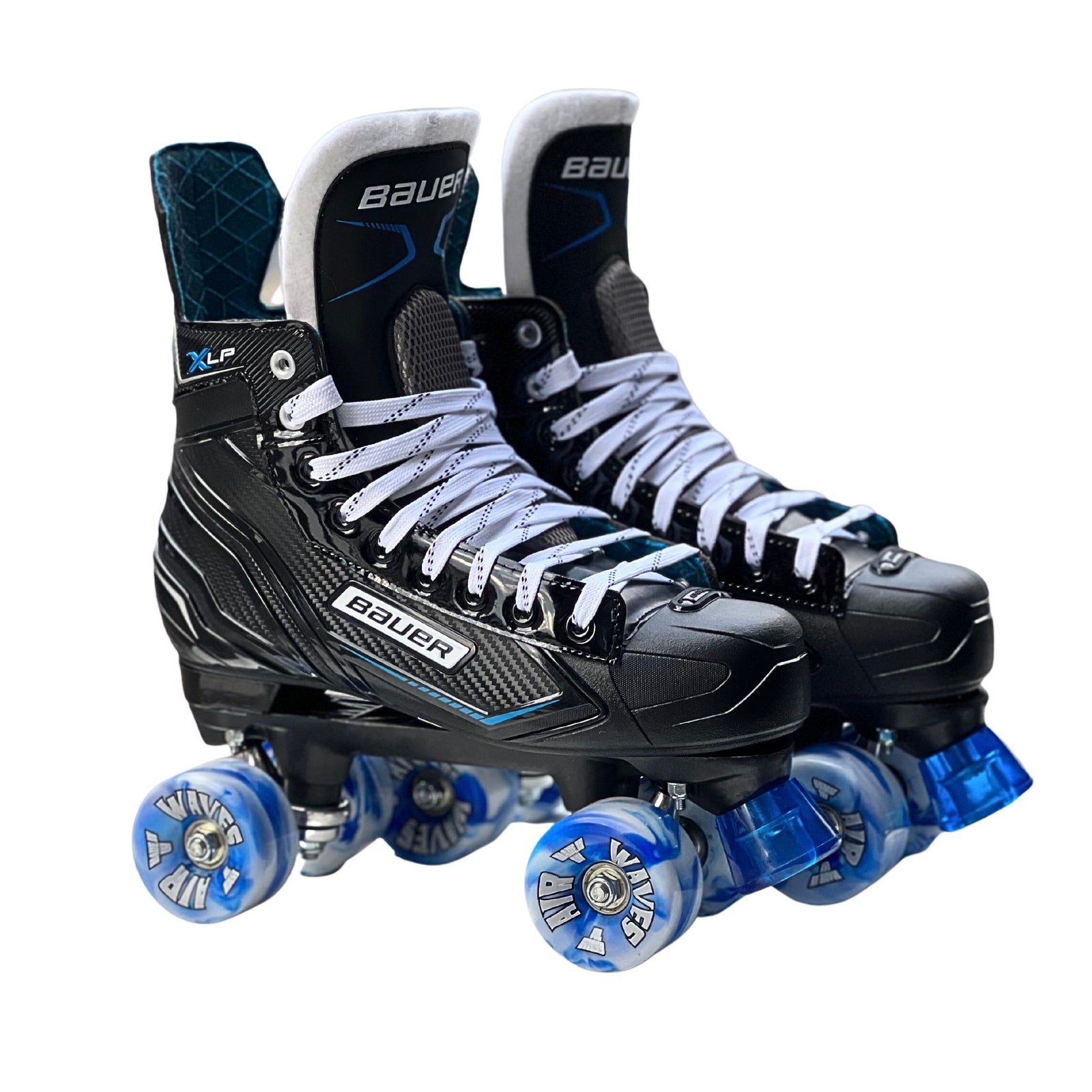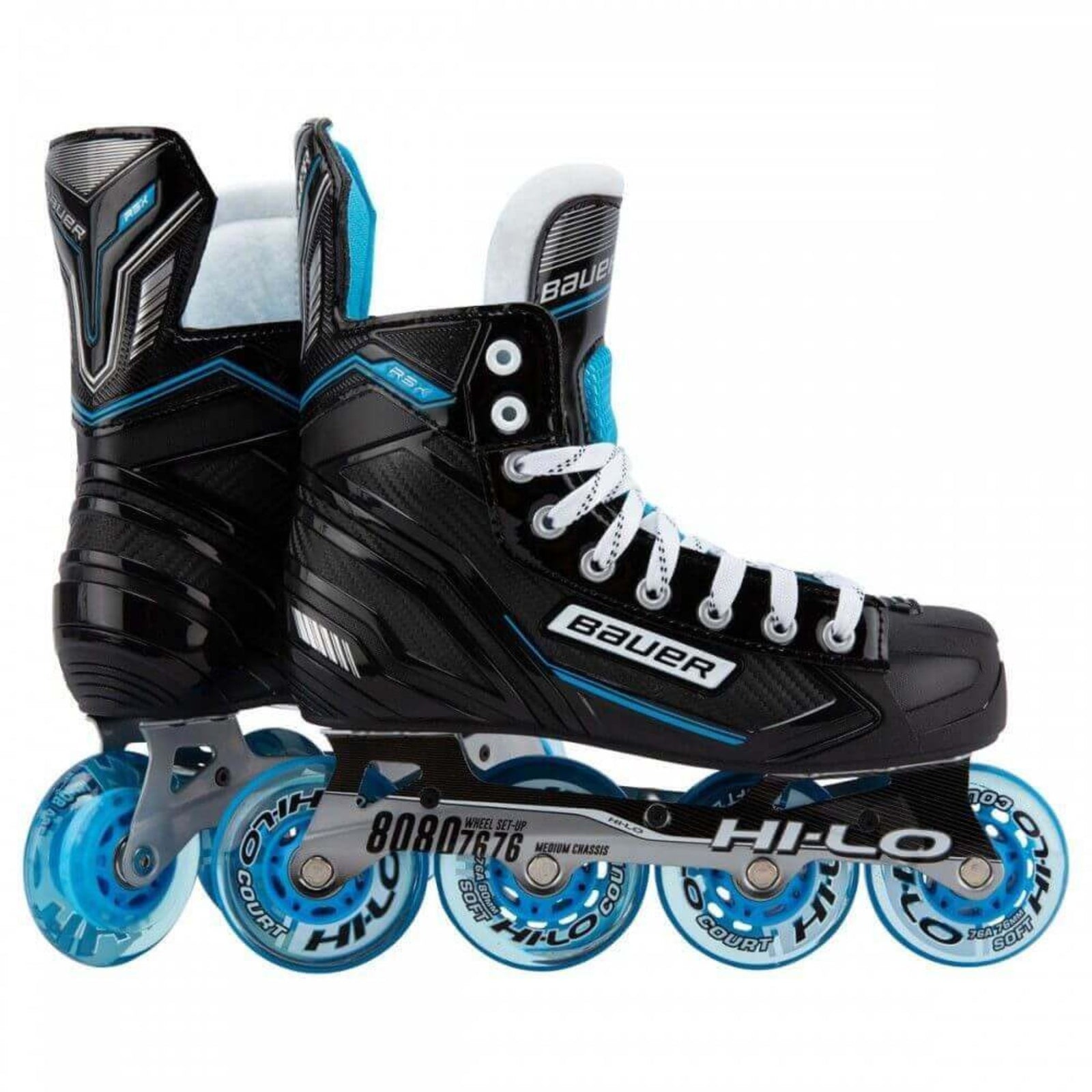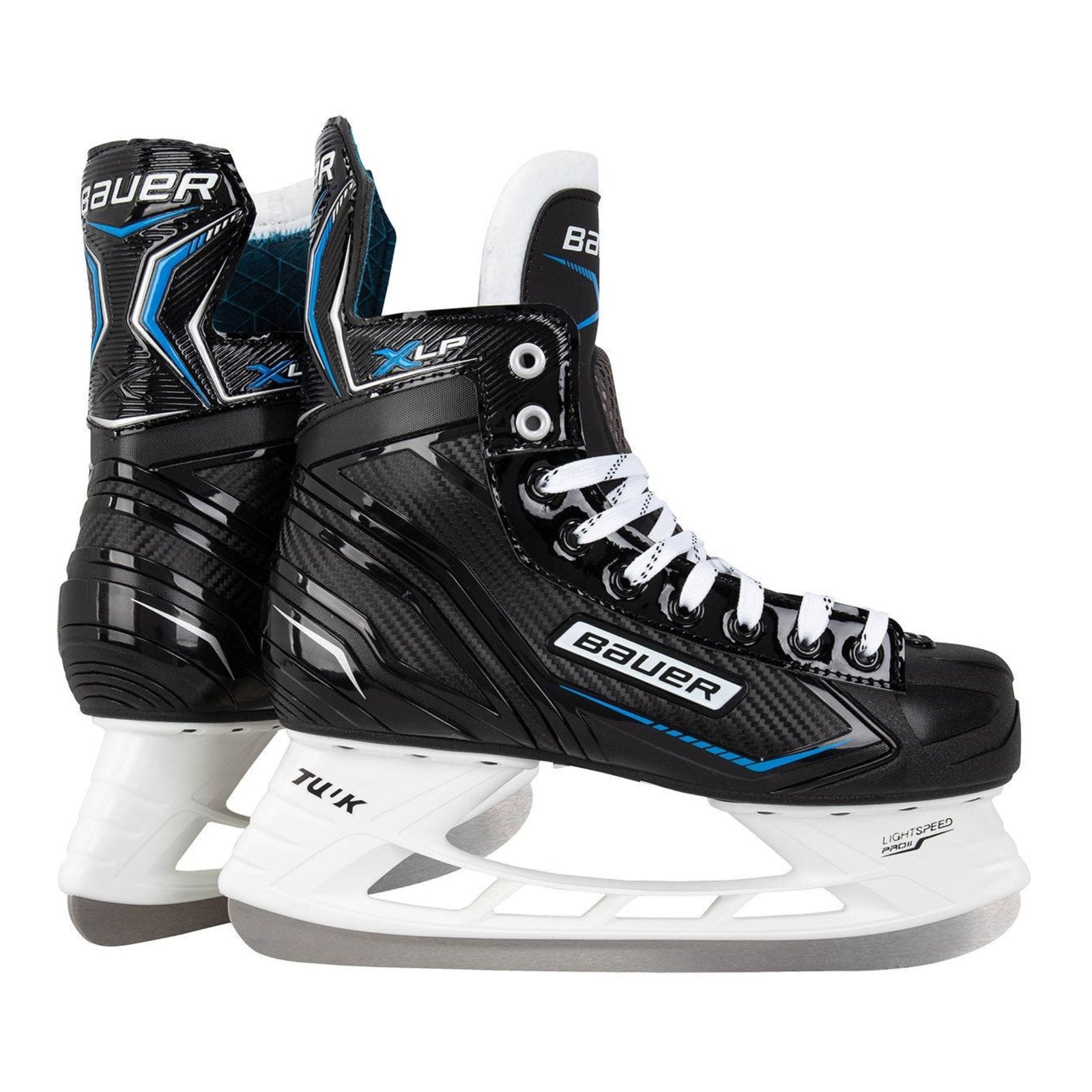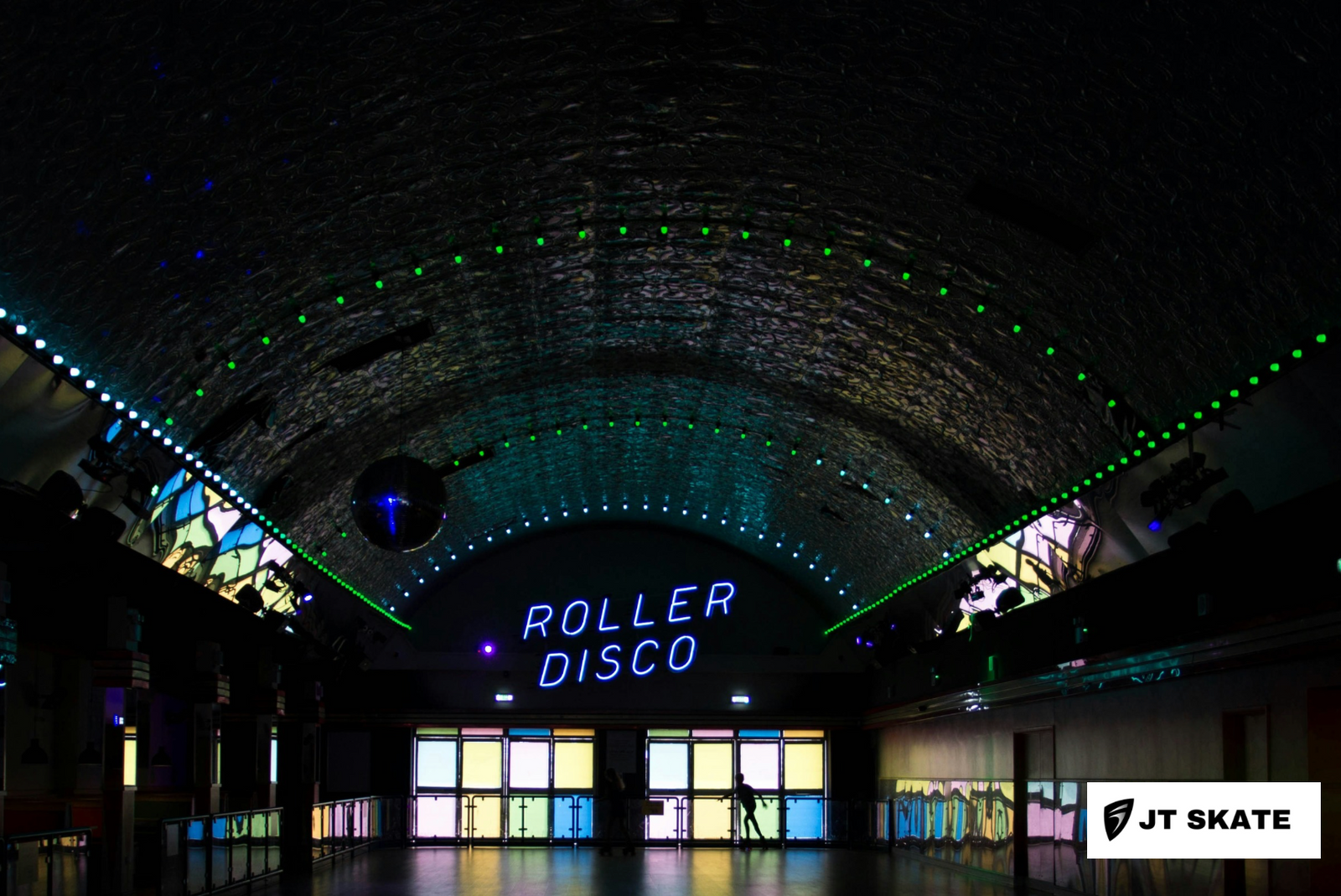The history of roller skating is inseparable from the history of roller rinks. When you think of roller rinks, you might think of skaters in bell-bottoms and frizzy hairdos skating around an enclosed space to ABBA with a disco ball spinning overhead. While you wouldn’t be wrong, roller rinks have a much longer history than their 1970s image. Dive with us into the history of roller rinks, from their inception, to their importance in Black and queer liberation.
Rise of Roller Rinks
Roller skating was invented in the 18th century by the Belgian inventor Jean-Joseph Merlin. According to an article from The New York Times, Merlin wanted to showcase his new invention at a masquerade party in London sometime in the 1760s. While skating around while playing the violin, Merlin crashed into an expensive mirror, broke his violin, and ended up with some pretty serious injuries (and probably a bit of embarrassment). It would be an entire century later, in 1863, when American businessman James L. Plimpton invented the modern quad roller skate and opened the world’s first roller rink in Newport, Rhode Island in 1866. Plimpton marketed roller skating as a fun activity men and women could do together in public, which at the time came with a set of strict social expectations and norms. The modern roller rink was born.
Roller Rinks in the 20th Century
In the following decades, roller skating and rinks exploded in popularity in the United States and Britain, where the sudden rise in the number of rinks in the latter was dubbed by the British press as “rinkomania,” according to the BBC. Part of the appeal of early roller rinks was that it provided a space for people to discover skating, have fun, and express themselves in a time when Western society had strict rules regarding how one should behave in public. However, as much as skating represented a form of liberation of many, it wasn’t barred from the discriminatory issues of the time. In the US, Black skaters were often denied entry into roller rinks. While this was often the result of racist segregation laws which created separate public spaces for Black and White Americans, this was the case across the US in places where such laws were never formalised. It wasn’t until the Civil Rights Movement of the 1960s when roller rinks began to desegregate, and even then many rinks remained de-facto segregated. As more roller rinks became integrated in the 1970s, a new type of roller rink was emerging. The sudden rise of disco led to the creation of the roller disco, with rinks essentially transforming into nightclubs (except everyone was dancing on wheels). The roller disco further propelled roller skating into the mainstream, with the hobby still associated with disco and the 1970s to this day. According to Vice, roller discos also provided a space for Black and queer skaters to come together and express themselves in public, further cementing the importance of roller skating in both communities. Roller rinks also became an important space for female liberation, seen by the rise of the roller derby. Today, roller derby is the fastest growing female sport in the UK.




